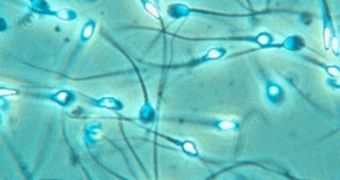DNA is the irrefutable proof in many outstanding criminal cases. However, about 250,000 DNA samples aimed to detect a rapist can remain anywhere from 3 to 12 months in forensic laboratories backlogs, and this gives suspects more than enough time to make themselves disappear.
The issue could be solved by Jessica Voorhees Norris, a Ph.D. candidate in forensic chemistry at the University of Virginia: her newly developed method for handling rape kit evidence, presented at the recent meeting of the American Academy of Forensic Science, decreases the time necessary for a DNA analysis from 24 hours to just 30 to 45 minutes and doubles the rate of sperm cell recovery. If adopted by forensic labs, the new method could reduce the backlog significantly.
"There is an overwhelming demand for DNA analysis of sexual assault evidence, but laboratories have neither the funding nor the manpower to handle the caseload in a timely manner. Juries have come to expect DNA evidence in sexual assault cases, but forensic labs are not able to perform in a timely and efficient manner due to limitations in the currently used technologies," said Norris.
When rape victims come to the police, a vaginal sample is taken with a cotton swab. In high-profile cases, the forensic labs perform the analysis immediately, but an overnight incubation is still necessary to get a result. In routine cases (meaning, most of them), the sample is stored, sometimes up to a year, and analyzed when the court date of the case is approaching. Meanwhile, the sample may degrade and the results thus become of no further use in a court of law.
As far as the classic method goes, the first stage consists in removing female and male cells from the swab using a special detergent. Most of the DNA comes from the epithelial cells of the victim's vagina, and it must be separated from the significantly less sperm cells from the attacker. That's why the probe must be left overnight, exposed to an enzyme that breaks down the more fragile female cells, releasing their DNA which is later removed. The stronger sperm cells are broken down using stronger enzymes. DNA profiles are made for both the victim and the perpetrator. As you can tell, this is a time-consuming process.
Later, DNA samples from the suspects are analyzed to see if their DNA matches the DNA of the sperm cells collected from the victim. The new method simplifies the separation of the male and female DNA, thus removing the need for the overnight incubation while also increasing the number of recovered sperm cells.
"This new process works extraordinarily well and could be implemented in forensic labs today. Unfortunately, getting labs to adopt a new protocol and getting legal systems to accept a new technology may take several years. In the meantime, the backlog of unanalyzed samples will continue to grow. Forensic science is about finding the truth in a timely manner. It is about using science to identify the guilty and exonerate the innocent," Norris explained.

 14 DAY TRIAL //
14 DAY TRIAL //